What is Dutch Elm Disease?
Dutch Elm Disease is a devastating fungal infection that affects elm trees. It was first identified in the Netherlands in 1921, hence the name. The disease is caused by the Ophiostoma fungi, which is spread by elm bark beetles. Dutch Elm Disease can kill mature trees quickly, making it a serious concern for elms. Since its introduction to the U.S. in the 1930’s, Dutch Elm Disease has killed over 80 million trees.
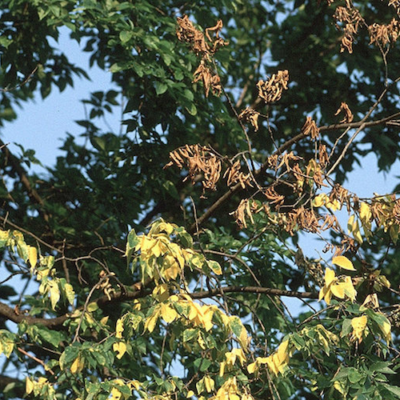
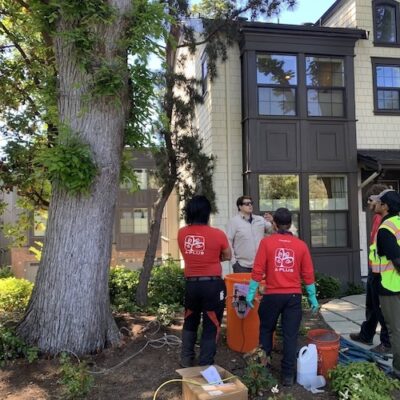
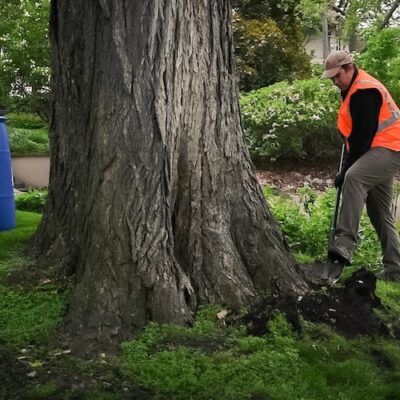
Dutch Elm Disease Life Cycle
The life cycle starts when the fungus enters the tree through wounds made by elm bark beetles. Once inside, it spreads through the tree’s vascular system, which is the water and nutrient transport system. Think of it as the blood vessels of the tree! The fungus clogs the vessels, preventing water and nutrients from reaching the leaves and canopy. As a result, the tree starves, often ending in rapid decline and eventual death.
Symptoms of the Dutch Elm Disease
After Dutch Elm Disease has severely infested a tree, it’s very difficult to treat successfully and save the tree. So be on the lookout and act early! Here are key symptoms to keep an eye out for:
- Wilting leaves
- Defoliation or premature leaf drop
- Dark streaks under the bark (Peel back a bit of bark and take a peek.)
- Dead branches, especially in the upper canopy
What Does Dutch Elm Disease Look Like?
The symptoms mentioned above are common indicators of Dutch Elm Disease. The leaves are the most visible part of a tree, so here are some more things you can easily look for to see if the disease is affecting your tree.
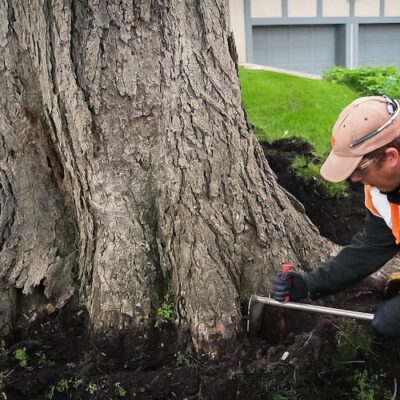
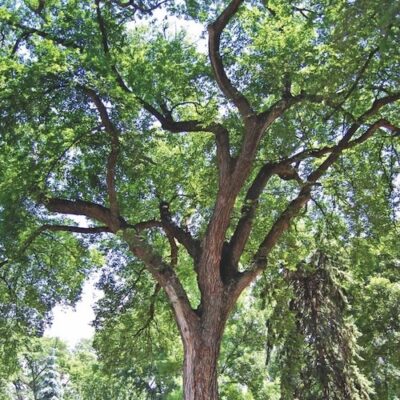
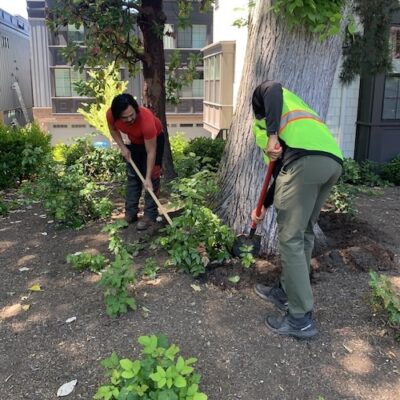
Dutch Elm Disease Leaves
Dutch Elm Disease leaves are the first to show signs of trouble. Initially, they appear wilted and turn yellow or brown. The discoloration spreads, and the leaves may curl and fall prematurely. These conditions are most common in spring and early summer, so check on your trees regularly in these seasons.
How to Treat Dutch Elm Disease?
- Pruning: Remove and destroy infected branches to prevent the fungus from spreading. Pruning should be done carefully to avoid further injury to the tree.
- Tree Removal: In severe cases, removing the infected tree may be necessary to protect surrounding trees.
- Keep Your Tree Healthy: A healthy tree is stronger and better able to ward off infections. So keep trees properly fertilized, irrigated, mulched, and pruned.
- Fungicide Injections: Inject the fungicide thiabendazole or Arbotect directly into the tree. This treatment protects the tree for 3 yrs, or 2 yrs under high disease pressure. Treat in late spring or summer when trees have reached full size. Please note, fungicide injections must be administered by a professional arborist.
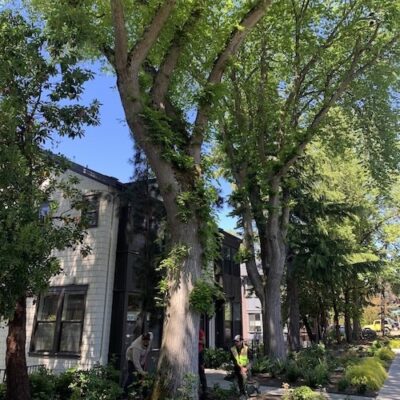
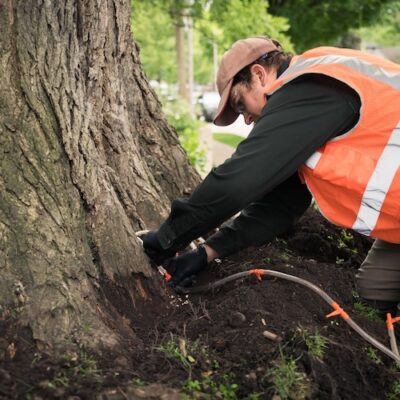
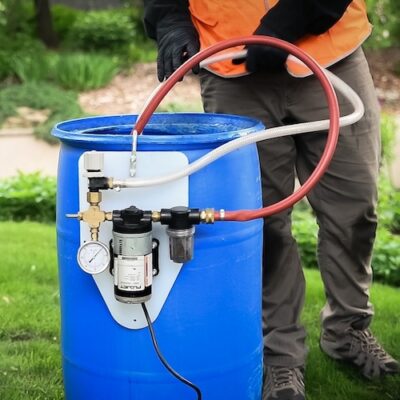
How To Prevent Dutch Elm Disease?
Prevention is always better than cure when it comes to Dutch Elm Disease. Plus, it saves you the cost of emergency treatments and tree removal. Here’s how to act preventatively:
- Regular Inspections: Regularly inspect your elm trees for signs of Dutch Elm Disease. Early detection can make a huge difference.
- Proper Pruning: Ensure that trees are pruned correctly and at the right time to minimize the risk of beetle infestation and fungal entry points.
- Sanitation: Dispose of dead or diseased wood promptly to reduce beetle breeding grounds.
- Chemical Treatments: Preventive fungicide treatments can protect healthy trees from becoming infected.
Got elms? Contact the A Plus Tree team today and get a free assessment! Our arborists will personally inspect your trees and recommend the best course of action.
